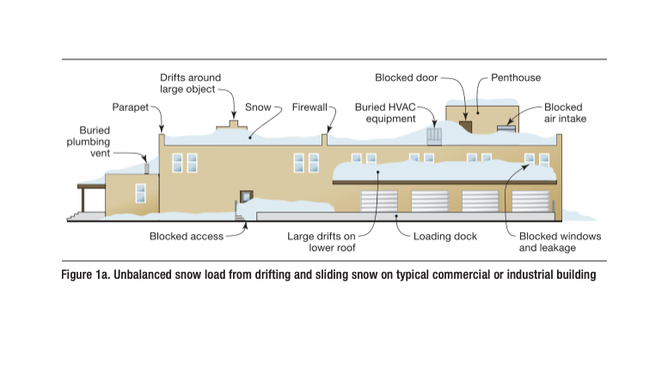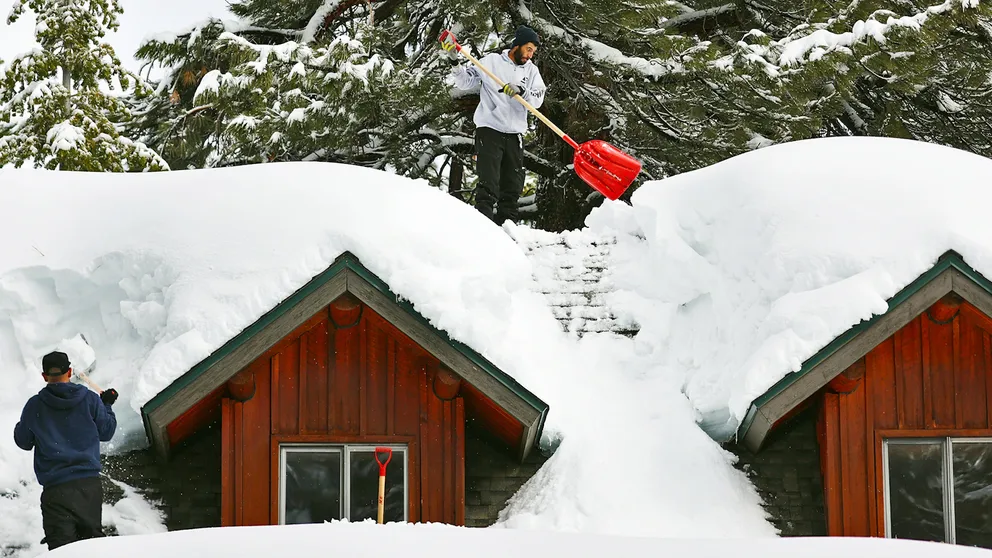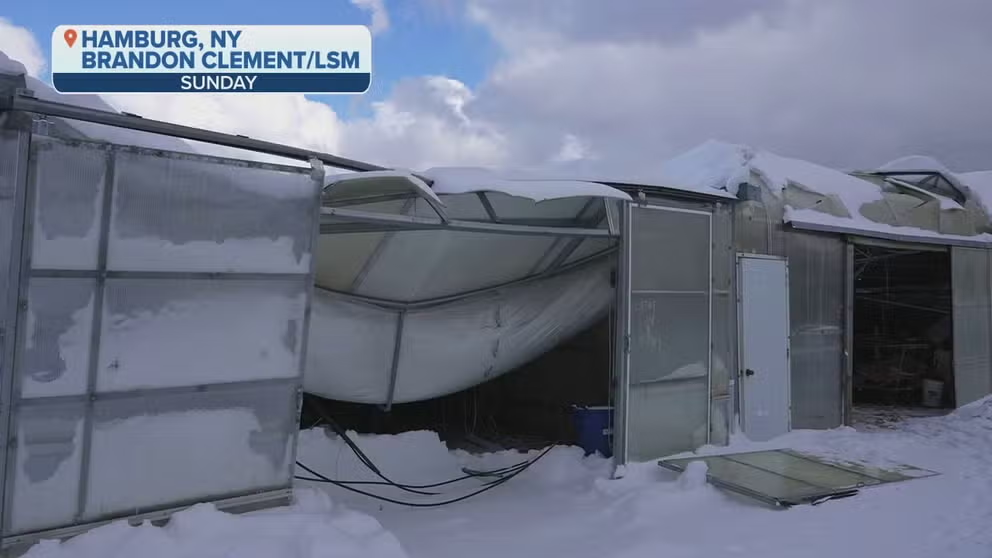Can your roof handle record-setting snow?
Record-setting snowfall could pose serious risks to homes. How much snow will make your roof collapse?
How much does snow weigh and can your roof handle it?
Heavy snowfall can pose a serious risk to homes, causing roof drainage concerns, damage or even failure.
After 80 inches of snow fell on Buffalo, New York suburb Orchard Park, residents are asking, "Can my roof take this?"
Many took to the dangerous task of shoveling it off the roof in fear of a collapse. These nursery owners were too late to save this greenhouse.
HISTORIC SNOWSTORM DROPS 80-INCHES IN BUFFALO AREA AS WESTERN NEW YORK DIGS OUT
Roof collapses after feet of snow
The 74 inches of snow that fell on this nursery greenhouse in collapsed the structure.
Record-setting snowfall could pose serious risks to homes. Along with the snow, there are strong winds that lead to blowing and drifting snow, especially onto homes. The heavy snow could create roof damage and drainage concerns.
"Unless the roof structure is damaged or decayed, most residential roofs, regardless of the location of the house, should be able to support 20 pounds per square foot of snow before they become stressed," Disastersafety.org reports.
You’ll need to know how much weight your roof can support. FEMA also says that many factors go into snow load effects on structures, like wind exposure to your roof, roof slope, roof shape and even the thermal condition of the building.
How much snow will an inch of rain produce

CONCORD, MA - MARCH 14: A man clears snow from the roof of a home on Sudbury Road in Concord, MA following the third nor'easter storm to hit the region in two weeks on March 14, 2018.
(Jonathan Wiggs/The Boston Globe via Getty Images / Getty Images)
FEMA says, "The weight of 1 foot of fresh snow ranges from 3 pounds per square foot for light, dry snow to 21 pounds per square foot for wet, heavy snow."
Packed snow is even heavier. Any new snow on top of old snow could jeopardize a load capacity.
And if at any point the snow were to melt and refreeze into ice, the frozen water would weigh significantly more than the heavy, wet snow.
With the strong winds and snowdrift, there will likely be an uneven rood snow load.

(FEMA)
"Unbalanced snow load poses a greater risk to the roof structural system than a uniform snow load. Hence, the danger of drifting and sliding snow is that both create an unbalanced snow load," FEMA found.
But before you head onto your roof with your snow shovel, you should determine whether not it may be necessary. Older homes may not be structurally sound enough to handle the amount of snow forecasted.
And if you determine that your home can handle the weight of all the snow, make sure that your drainage systems are clear for when the snow melts.
"Snow melt may accumulate in low areas on roofs with poorly designed or blocked drainage systems. This condition is referred to as ponding," FEMA writes. "Ponding creates a concentrated load on the roof structural system and a potential hazard."
Make sure you have the FOX Weather app downloaded to stay up-to-date on the storm.
Residents shovel record snow off roofs fearing collapse
Homeowners and apartment maintenance workers shovel the record snowfall in Orchard Park, New York off roofs afraid of collapse under the weight. Orchard Park received a total of 80 inches of snow.


